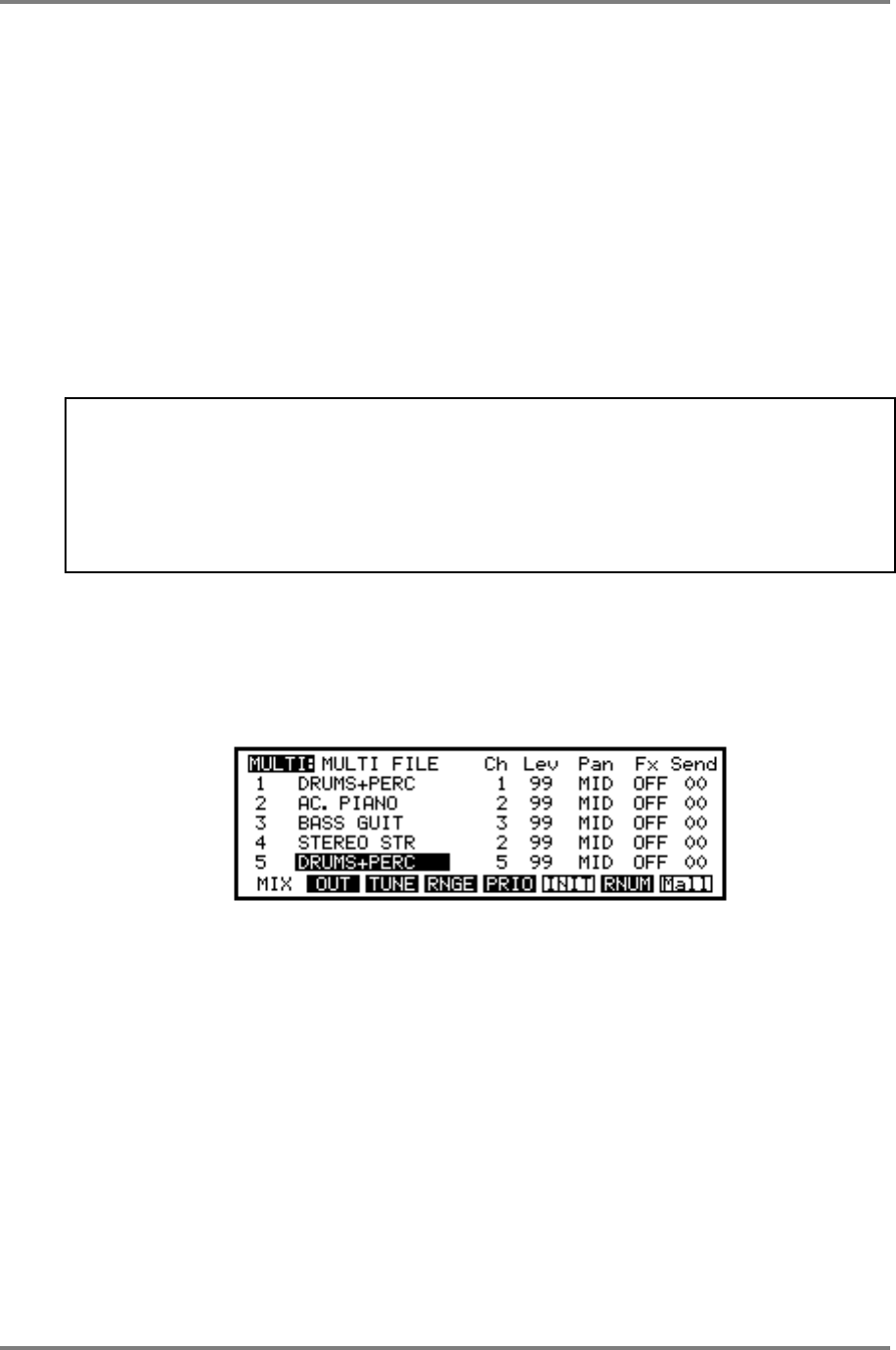
MULTI MODE
Page 48 CD3000XL OperatorÕs Manual
MODIFYING THE MULTI
The beauty of the CD3000XL’s MULTI mode is that, as the sequencer is playing back your
sequence, you can interact with the parts, assigning different programs to parts ‘on the fly’
within the context of the sequence (you can also edit program parameters such as envelope
and filter settings, etc., within the context of your tune as we shall see later).
The MULTI mode has no separate edit mode (the EDIT key is used to edit the actual programs
in the parts) so, as the song is playing from the sequencer, you can make changes immediately
if needs be. For example, you might like to see how PART 2 sounds with different piano
sounds - move the cursor to PART 2 and, as the sequencer is running, scroll through the
different piano programs you loaded using the DATA wheel. You can try alternative piano
sounds and hear how they sound. Do the same for the basses. For example, you may have
loaded some acoustic basses, an electric bass, a slap bass and some synth basses - as the
sequence plays, scroll through them, trying out different ones till you find one that suits the
track. The same, of course, can be done with the string part.
HINT: When loading the programs from disk, try to load certain types together. For example,
load all the piano sounds you think you may need one after another so that they are all grouped
together in memory. Similarly, load all your basses one after another so that these are all
grouped together. This is suggested as it will make selection and comparison of different
sounds in any given part easier.
If you forget to load them in order, don’t worry as you can renumber each program to something
more suitable as we shall see in a moment.
You may decide that you want the strings to play the same part in unison with the piano. To
achieve this, simply set part 4 to MIDI channel 2, the same as the piano.
You may also decide you want to add some percussion from the DRUMS+PERC program. You
could do that in part 1 on MIDI channel 1 but, if you prefer, you may like to separate the drums
and percussion so, in part 5, assign the DRUMS+PERC program. You will see this:
Even though the same drums program is used twice in different parts, you may record
sequence data on a separate MIDI channel (giving you more flexibility for editing the part on
your sequencer) plus, the DRUMS+PERC program assigned to part 5 may have its own
independent mix settings, effects sends, etc..


















